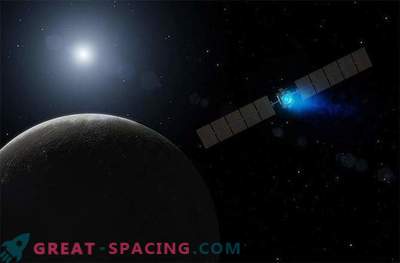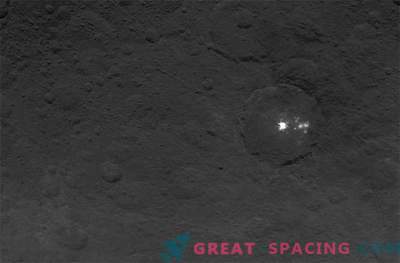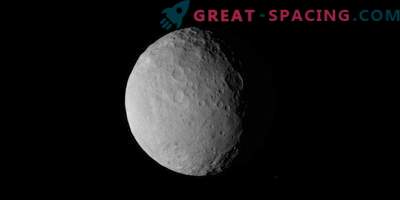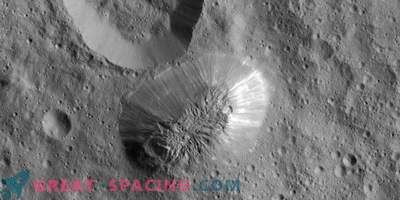
The bright spots of the Occator crater shine on the surface of Ceres. New research is trying to understand how these spots formed from cryomagma
A recent NASA mission on the dwarf planet Ceres was able to notice bright white spots of salt on the surface. Scientists decided to study the factors that influenced volcanic activity, which formed distinctive points and could play a key role in mixing components for life in another world.
Ceres volcanoes are cryovolcanoes that form on planetary bodies with ice shells. They transport salt water (cryomagma) from underground reservoirs to the surface. Scientists believe that cryovolcanoes on the icy satellite of Jupiter Europe can contribute to chemical mixing, creating complex molecules for life.
Studying the functioning of such volcanoes on Ceres (a simpler geological environment than in Europe) will help to deal with the main forces that control their activity. The dwarf planet covers 585 miles across and is considered the largest planetary body in the asteroid belt between Mars and Jupiter.
Ceres appeared billions of years ago, formed from stone and ice. It is remote from other planets, therefore, it was believed that its geology is devoid of activity. But that all changed thanks to the mission of NASA Dawn, which sent photos of bright white spots located at the bottom of the impact craters - the remnants of a cryomagma. The location of the spots near or in the center suggests that the heat and energy generated by the strikes of asteroids can push the geology of Ceres, creating reservoirs with a cryomagma, which then seeps to the surface through cracks.
A new study focused on the bottom of the crater Okkator (width - 90 miles), formed about 20 million years ago. However, the age of the field is 4 million years, which indicates a relatively recent formation. Earlier analyzes have shown that conditions on Ceres do not allow the cryo-magma to exist for more than 400,000 years.
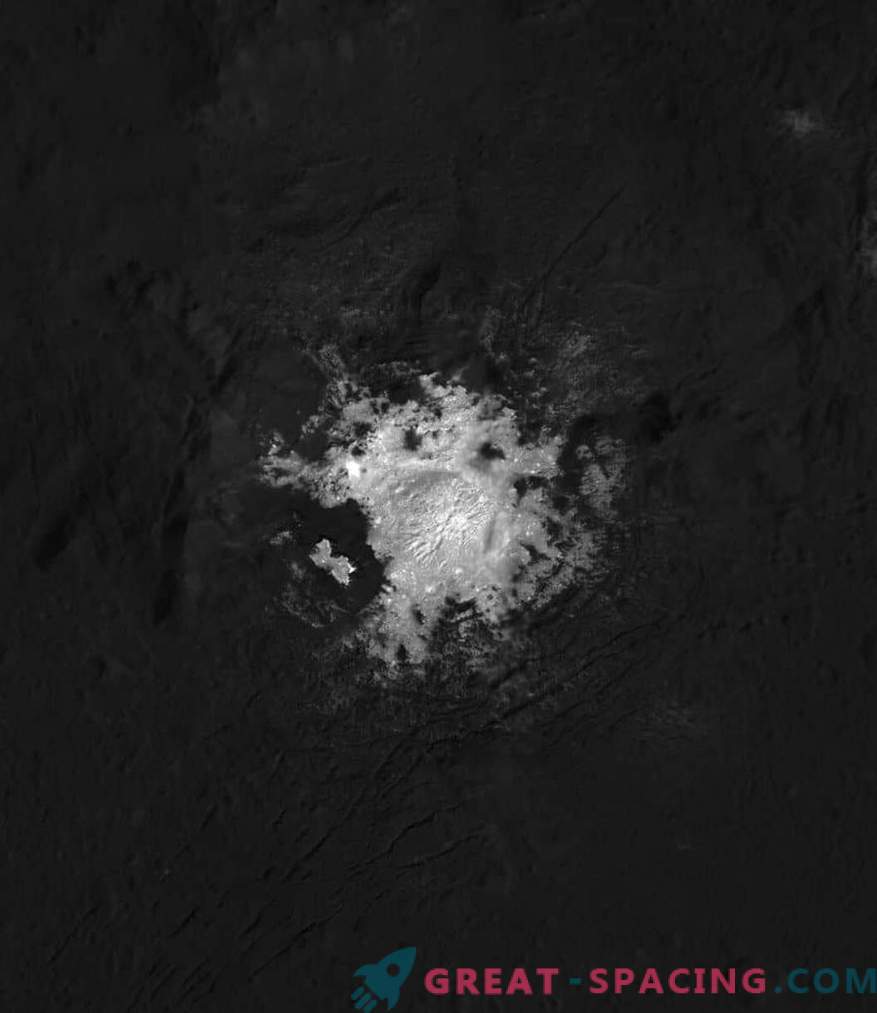
Crater Occator on Ceres with a remarkable central bright area called “fakula Cerealias”
Of course, the discrepancy between the age of the salt deposits and the time of the impact makes one wonder: how was the reservoir able to remain in a liquid state for millions of years in the geologically inactive world? In the new work, they studied the shelf-life of a cryomagma, incorporating in their calculations modern data on the chemistry and physics of the bark of Ceres.
The conclusions suggest that the cryomagma of Occator could persist up to 10 million years. This does not completely cover the time span, but indicates that the additional data creates a more realistic cooling time scale. In the future, the updated model will make it possible to understand whether all the material involved in the observed deposits can be explained by a blow or the reason is completely different.
